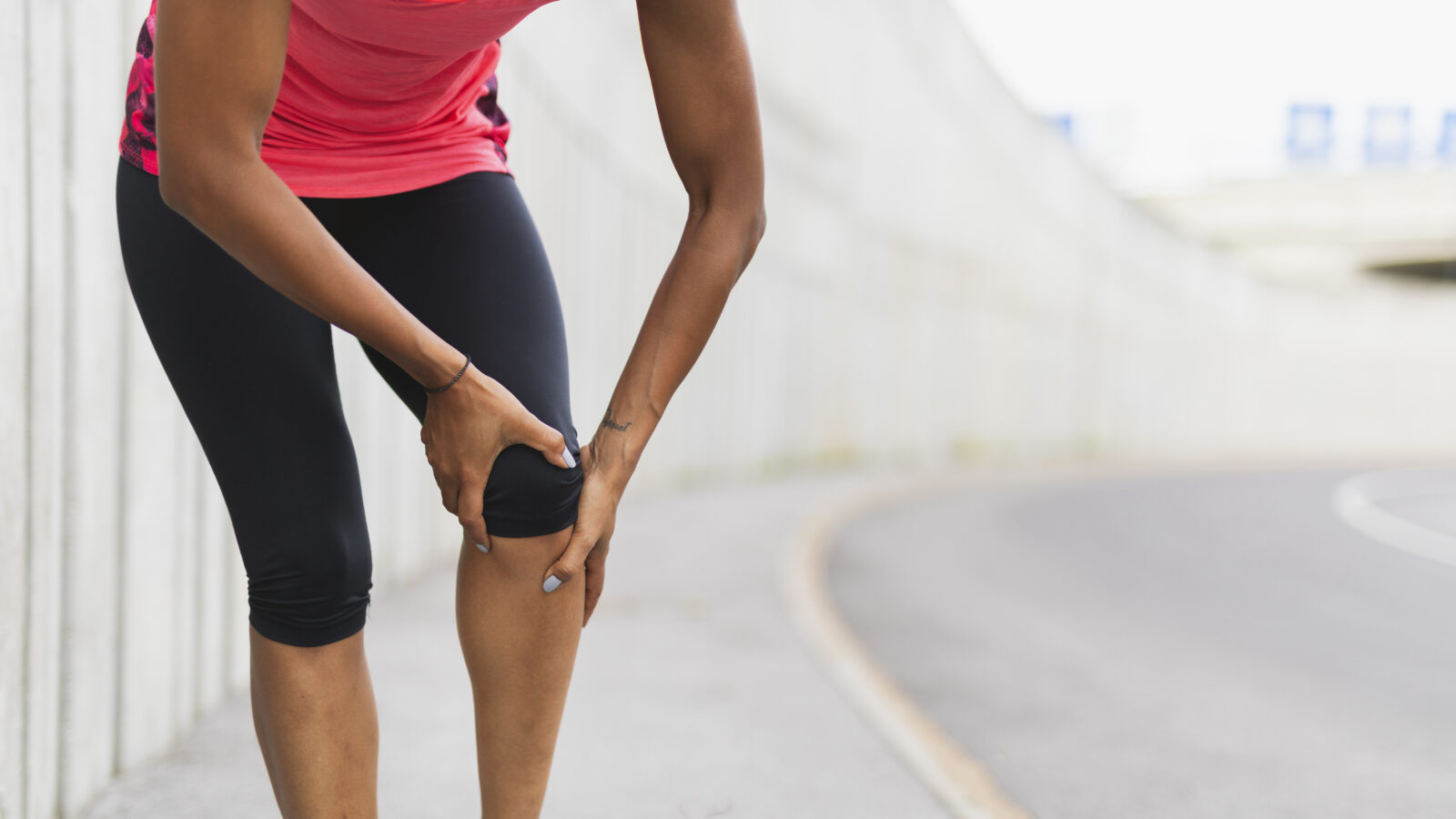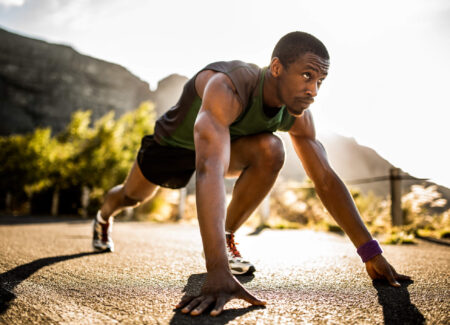
If you have pain around the kneecap that worsens with activity, you may have a common condition called runner’s knee. The term is a bit misleading, however. It is not limited to runners— and it is not a single condition. Runner’s knee is a broad term used to describe pain in and around the kneecap caused by various injuries and conditions. Learn the signs of and how to treat runner’s knee, as well as tips to prevent and manage symptoms so you can stay active and pain-free.
The kneecap (patella) is located over the front of the knee joint (patellofemoral joint.) Tendons and ligaments attach the kneecap to the thigh muscle and the shin bone. When the knee bends, the back of the kneecap slides over the cartilage of the thighbone (femur.)
Abnormalities among any of these moving parts can result in patellofemoral pain syndrome, or what is commonly referred to as runner’s knee. Although patellofemoral pain is common among runners because the motion of running repeatedly stresses the knee joint, people of all ages and physical abilities can experience these symptoms.
Knowing the underlying cause of patellofemoral pain will help you, your healthcare provider, and your physical therapist determine the most appropriate and effective course of treatment. Runner’s knee causes and risk factors include:
People with patellofemoral pain typically experience it during activity, or when getting up from being in a seated position for a long period of time. The knee can also feel unstable or weak. The kneecap can also be tender to the touch.
Clicking, popping, or grinding in the knee joint during bending are also common symptoms of runner’s knee. Because these symptoms are indicative of other health conditions, it is important to discuss your symptoms with your healthcare provider for an accurate diagnosis.
With a proper diagnosis and the guidance of your healthcare provider, there are things you can do at home to relieve runner’s knee pain and encourage recovery. Rest is vital. As much as you can, reduce movements that make patellofemoral pain worse: things like lunging, deep squatting, and running until your symptoms are stable.
When treating soft tissue injuries, remember this handy acronym: PEACE and LOVE. The latest research supports the following two-fold approach to reduce pain and inflammation and promote healing.
For the first few days after an injury, focus on PEACE:
After the first few days of PEACE, treat soft-tissue injuries with LOVE:
Physical therapy is ideal for many people dealing with runner’s knee because it addresses the underlying structural issues that affect the knee joint to reduce pain and improve mobility.
Pain reduction is accomplished through the use of exercise, manual therapy and the occasional use of modalities such as dry needling or electrical stimulation. Movement and/or gait training are common for patients with overuse injuries. Strengthening and stretching exercises can improve the plasticity of the muscles of the ankle, knee, and hip to ease excess pressure on the knee and kneecap.
Beyond these benefits, physical therapists also educate their patients on lifestyle modifications to prevent the condition from recurring. For example, they can recommend exercises that won’t overstress the knee joint or postural adjustments to protect the knee during running and working out.
Once you’re back to feeling 100%, there are steps you can take to avoid irritating the knee joint in the future. First, you don’t want to jump back into intense exercise too quickly. Avoid resuming activity until you can bend and straighten your knee, stand, walk, and jog without pain.
Take it slow and ease into your workouts gradually. A good warmup, stretching, and supportive athletic shoes can all help reduce your risk of knee pain and other injuries whether you are training for your next marathon—or just taking a stroll around the block. Your recovery starts with a targeted physical therapy plan. To schedule an assessment for knee pain, find a physical therapy clinic near you.

